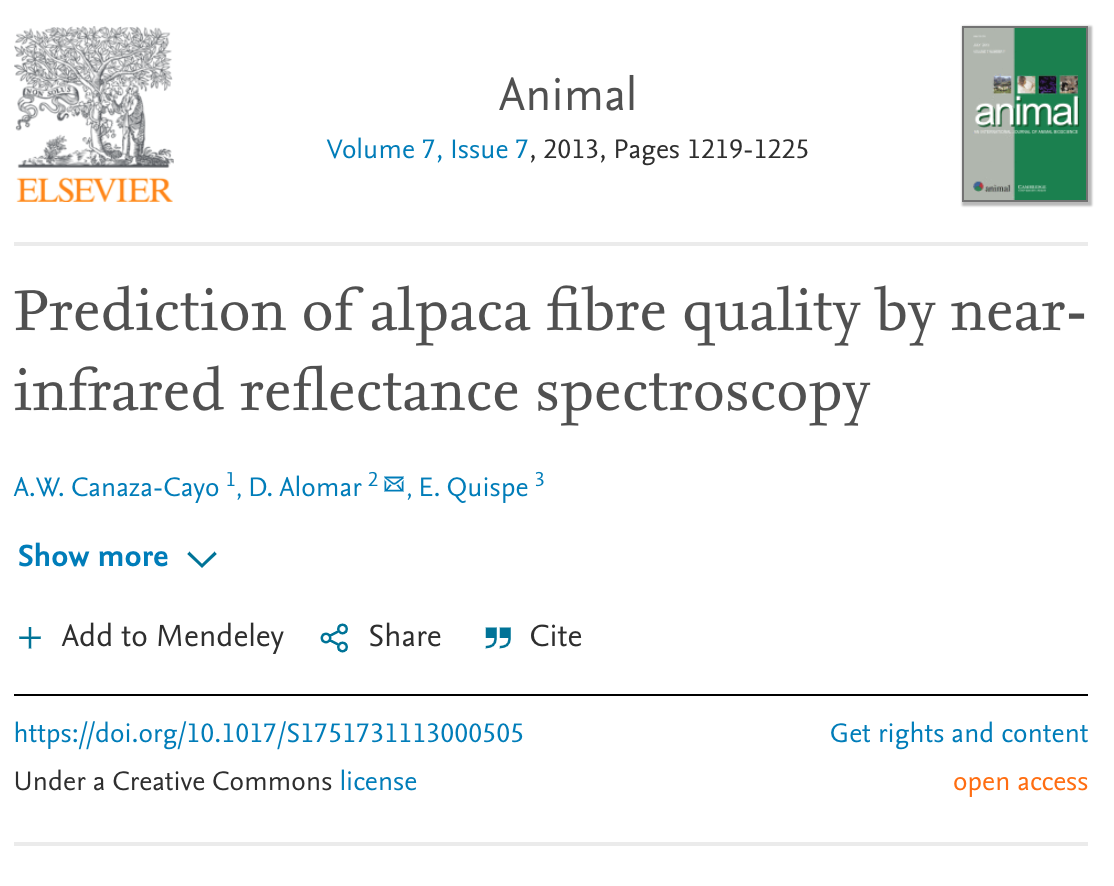
Prediction of alpaca fibre quality by near-infrared reflectance spectroscopy
Abstract
Rapid and efficient methods to evaluate variables associated with fibre quality are essential in animal breeding programs and fibre trade. Near-infrared reflectance spectroscopy (NIRS) combined with multivariate analysis was evaluated to predict textile quality attributes of alpaca fibre. Raw samples of fibres taken from male and female Huacaya alpacas (n5291) of different ages and colours were scanned and their visible–near-infrared (NIR; 400 to 2500 nm) reflectance spectra were collected and analysed. Reference analysis of the samples included mean fibre diameter (MFD), standard deviation of fibre diameter (SDFD), coefficient of variation of fibre diameter (CVFD), mean fibre curvature (MFC), standard deviation of fibre curvature (SDFC), comfort factor (CF), spinning fineness (SF) and staple length (SL). Patterns of spectral variation (loadings) were explored by principal component analysis (PCA), where the first four PC’s explained 99.97% and the first PC alone 95.58% of spectral variability. Calibration models were developed by modified partial least squares regression, testing different mathematical treatments (derivative order, subtraction gap, smoothing segment) of the spectra, with or without applying spectral correction algorithms (standard normal variate and detrend). Equations were selected through
one-out cross-validation according to the proportion of explained variance (R2CV), root mean square error in cross-validation (RMSECV) and the residual predictive deviation (RPD), which relates the standard deviation of the reference data to RMSECV. The best calibration models were accomplished when using the NIR region (1100 to 2500 nm) for the prediction of MFD and SF, with R2CV50.90 and 0.87; RMSECV51.01 and 1.08mm and RPD53.13 and 2.73, respectively. Models for SDFD, CVFD, MFC, SDFC, CF and SL had lower predictive quality with R2CV,0.65 and RPD,1.5. External validation performed for MFD and SF on 91 samples was slightly poorer
than cross-validation, with R2 of 0.86 and 0.82, and standard error of prediction of 1.21 and 1.33mm, for MFD and SF, respectively. It is concluded that NIRS can be used as an effective technique to select alpacas according to some important textile quality traits such as MFD and SF.
Keywords: alpaca, fibre quality, diameter, near-infrared spectroscopy, NIRS
